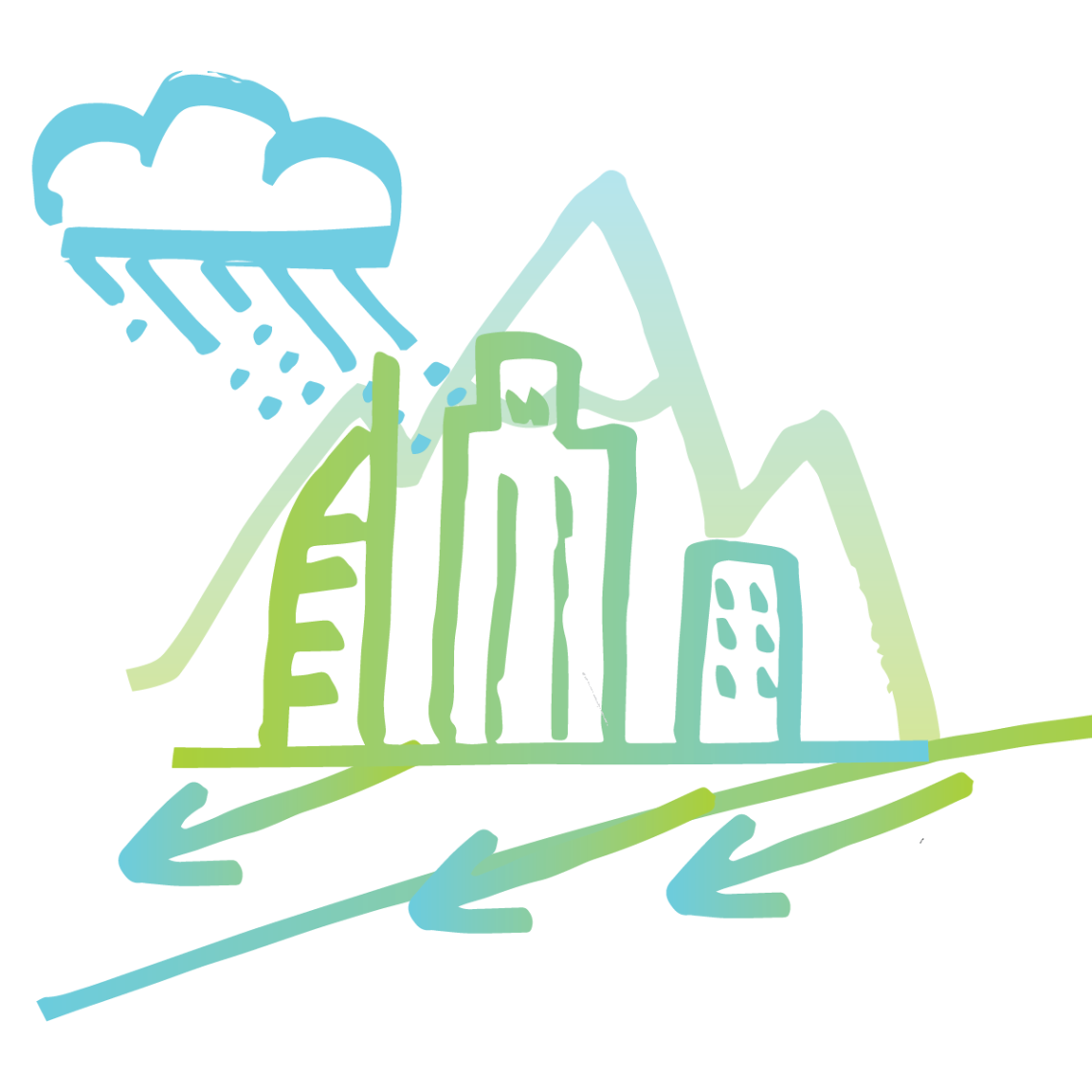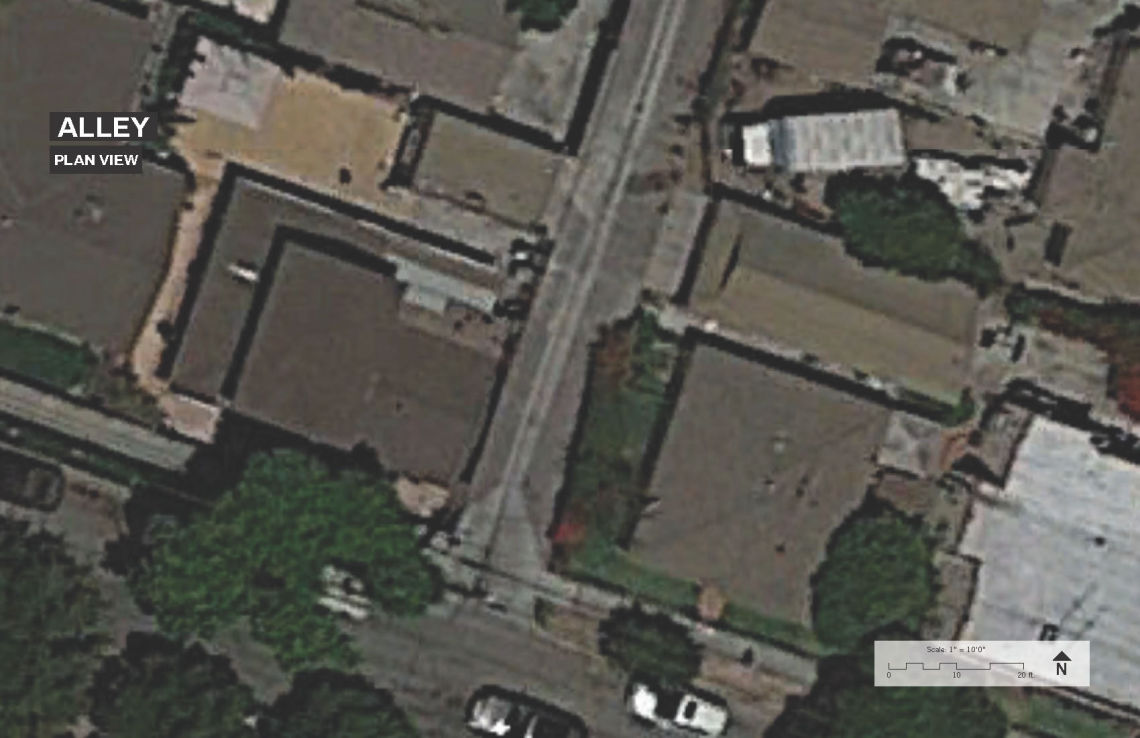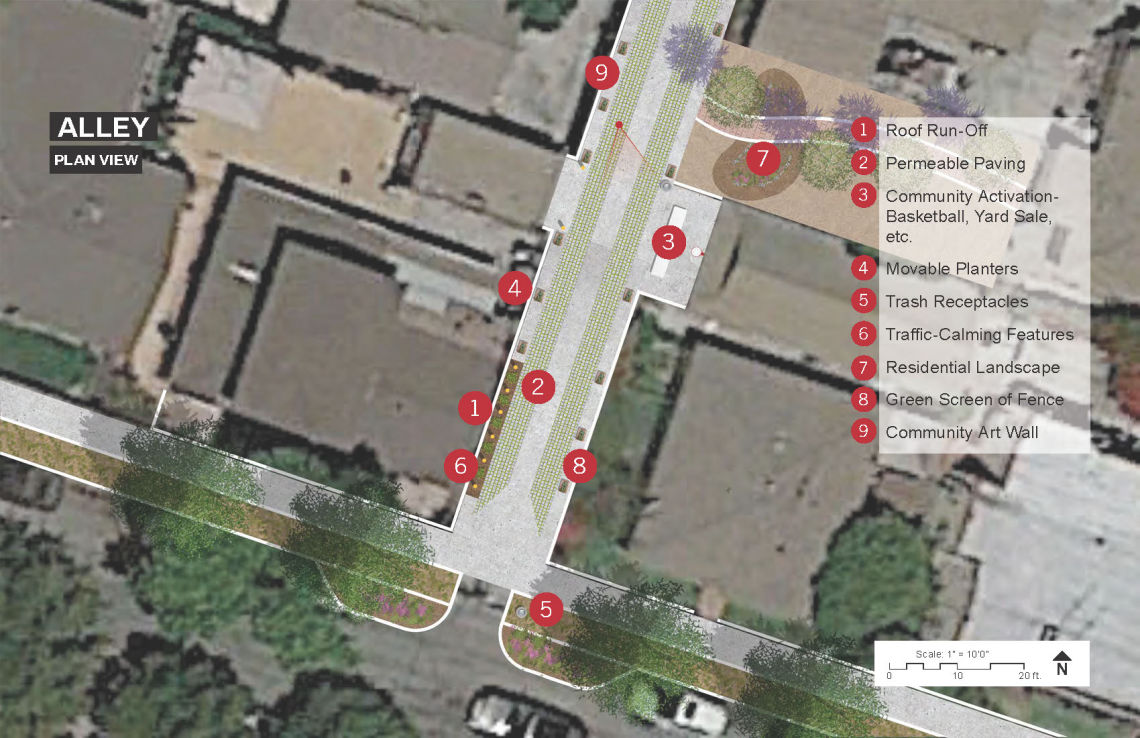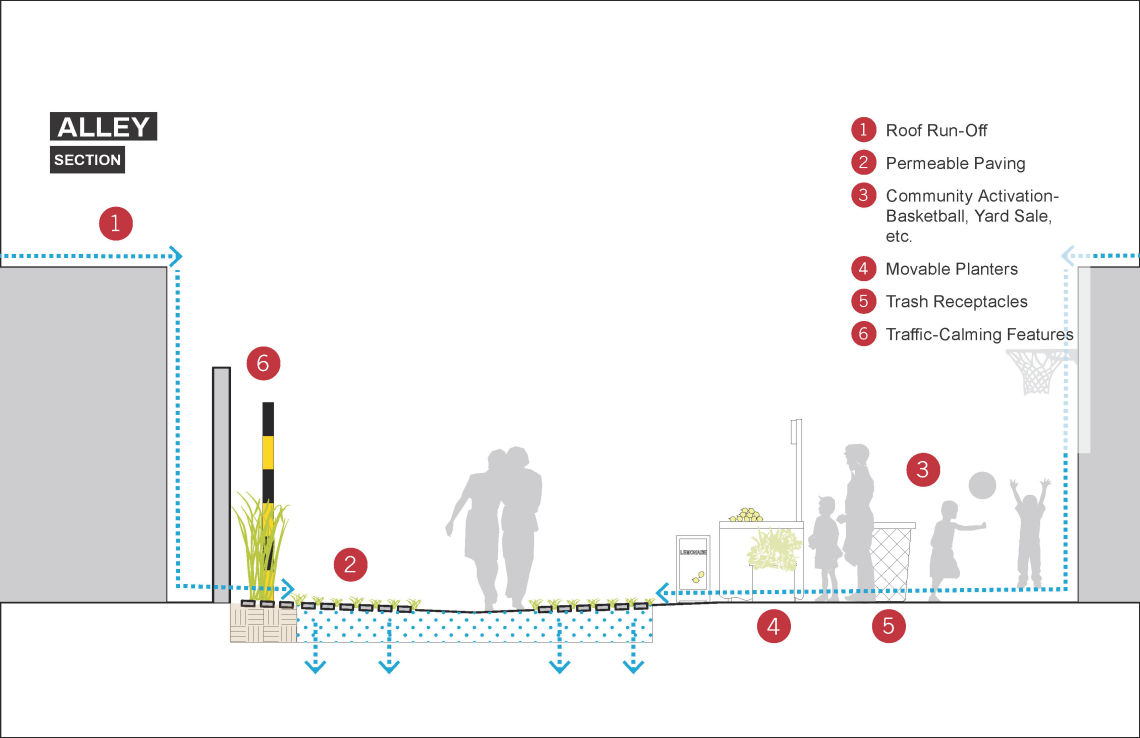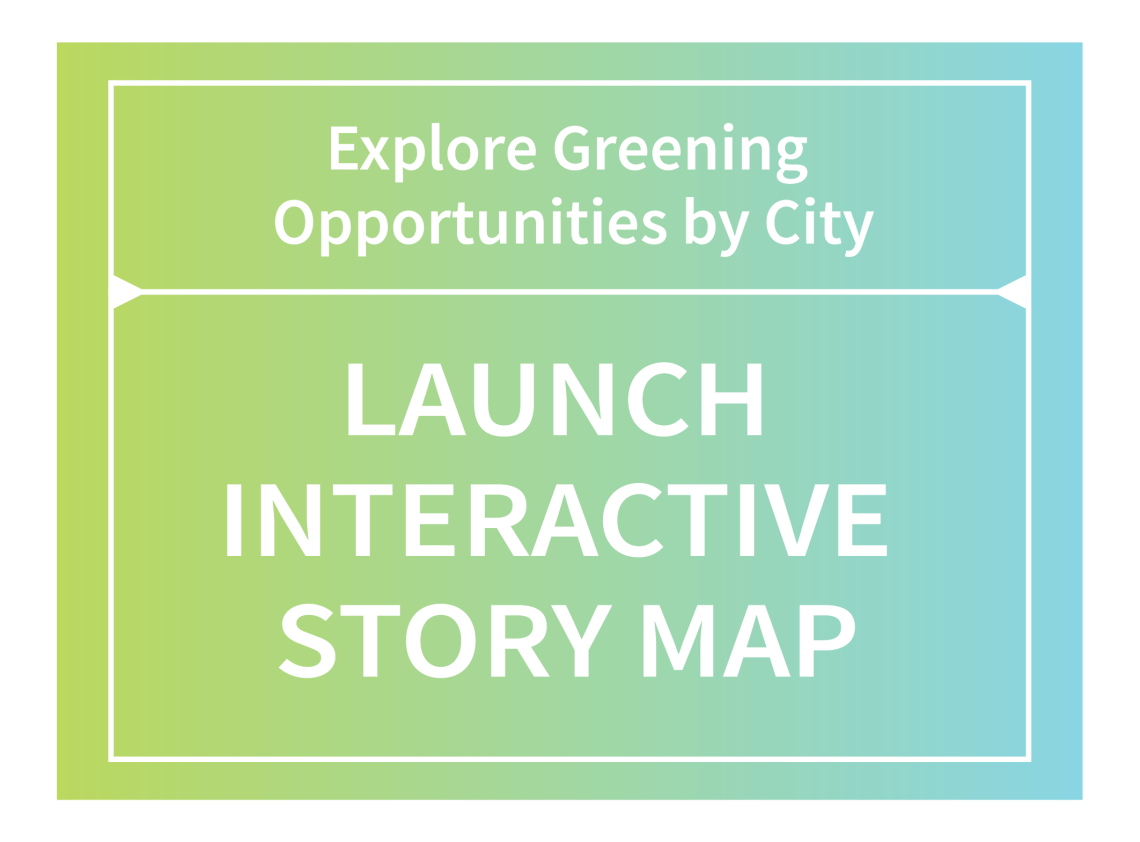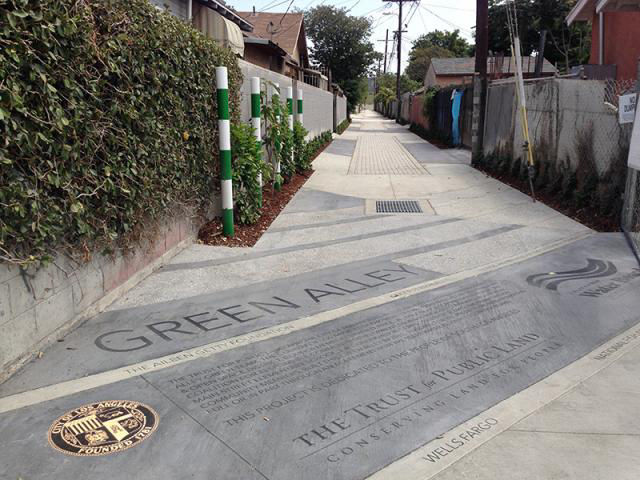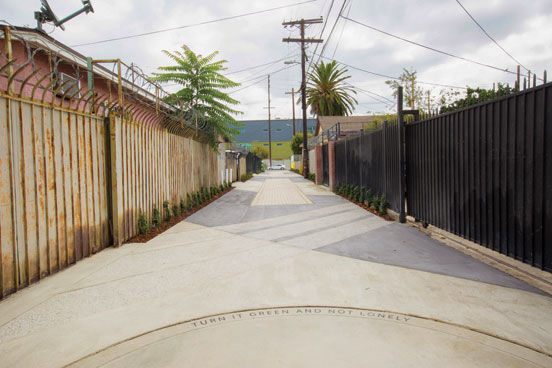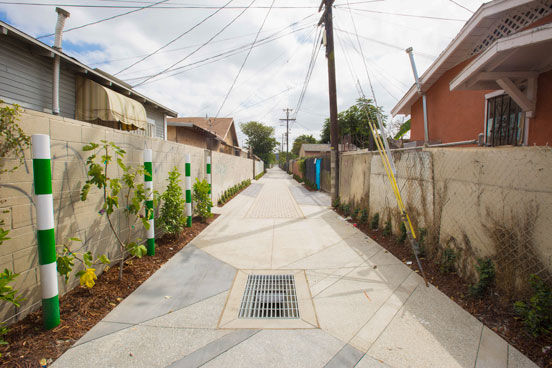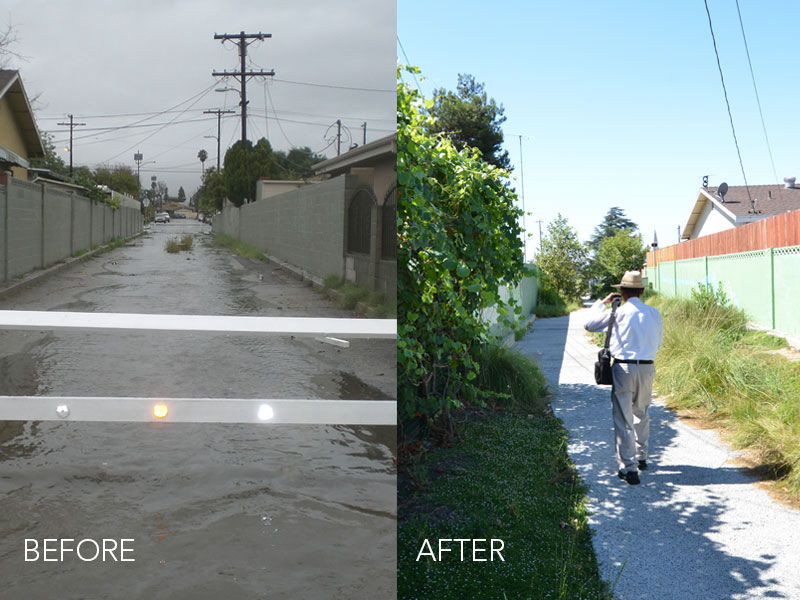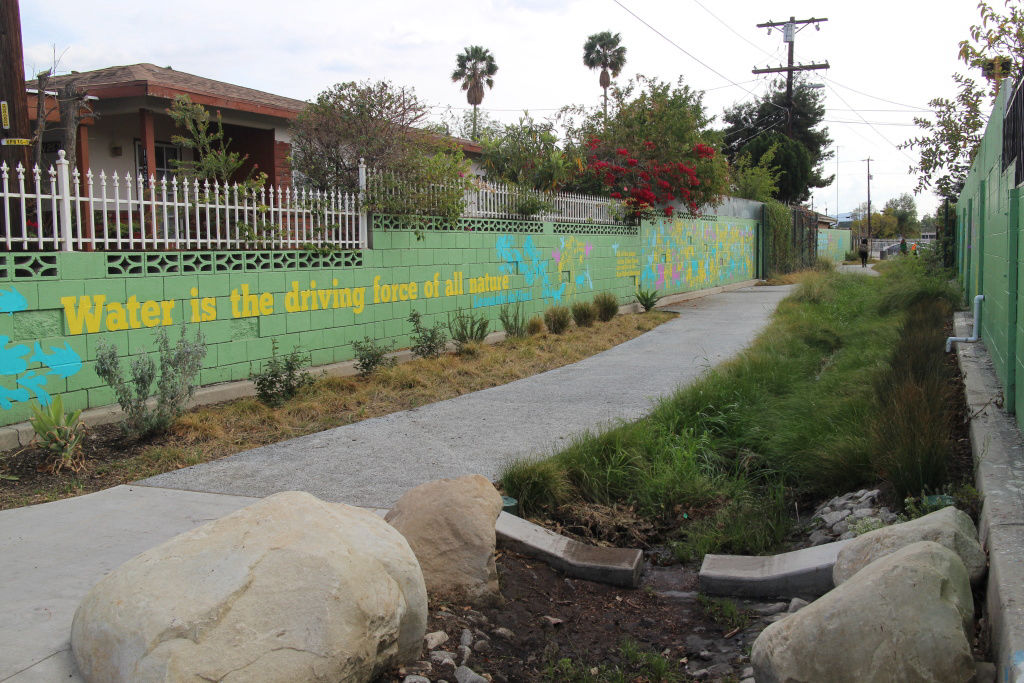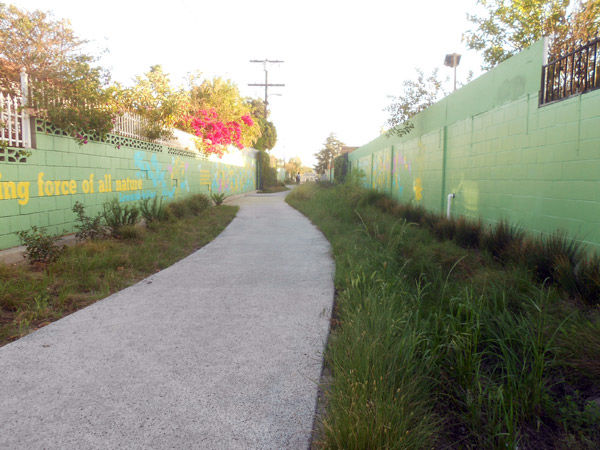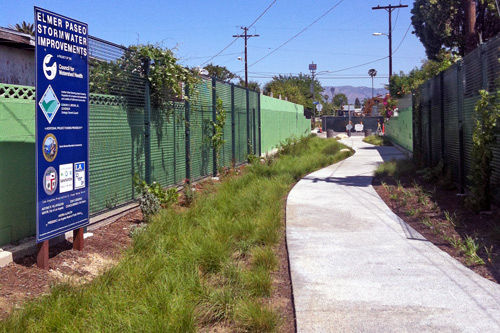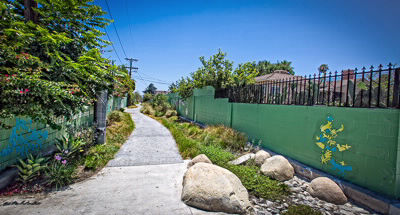Alleys
From Grey Alleys to Green Alleys
Alleys throughout our cities can be reimagined as safe places to walk in the shade, recreate with neighbors, and enjoy a more natural environment. Green alleys are especially useful in neighborhoods where park space is limited and neighborhoods are densely packed.
greenscape title visualizing2

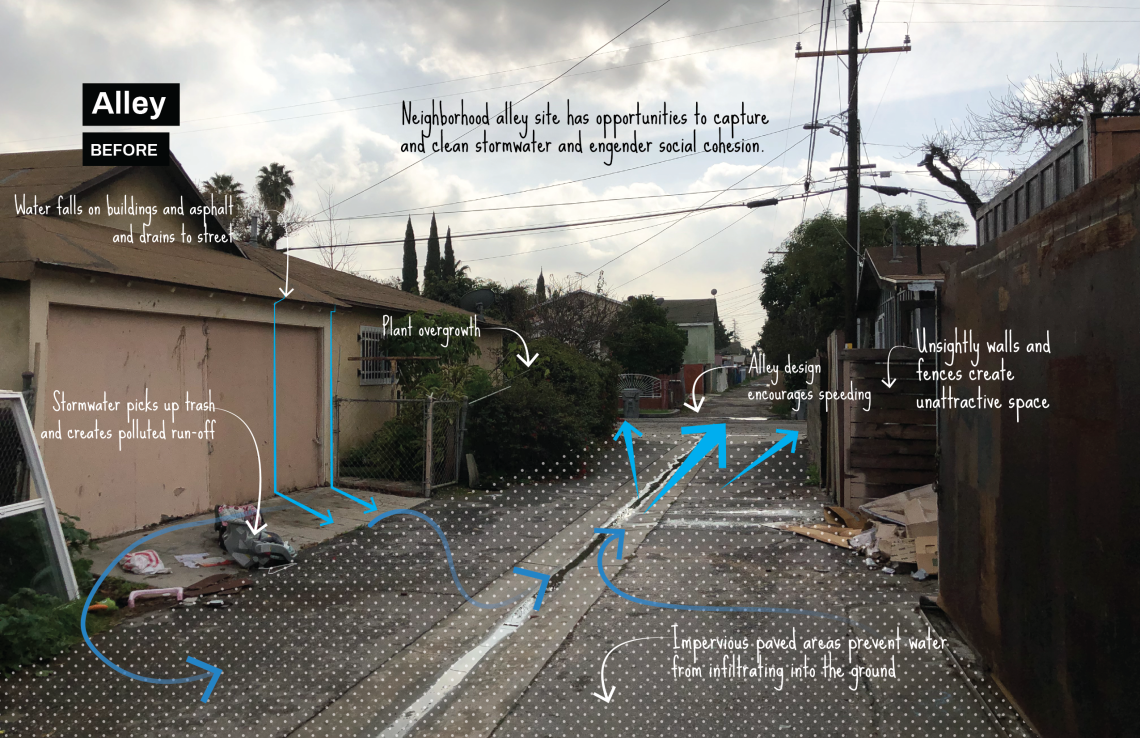
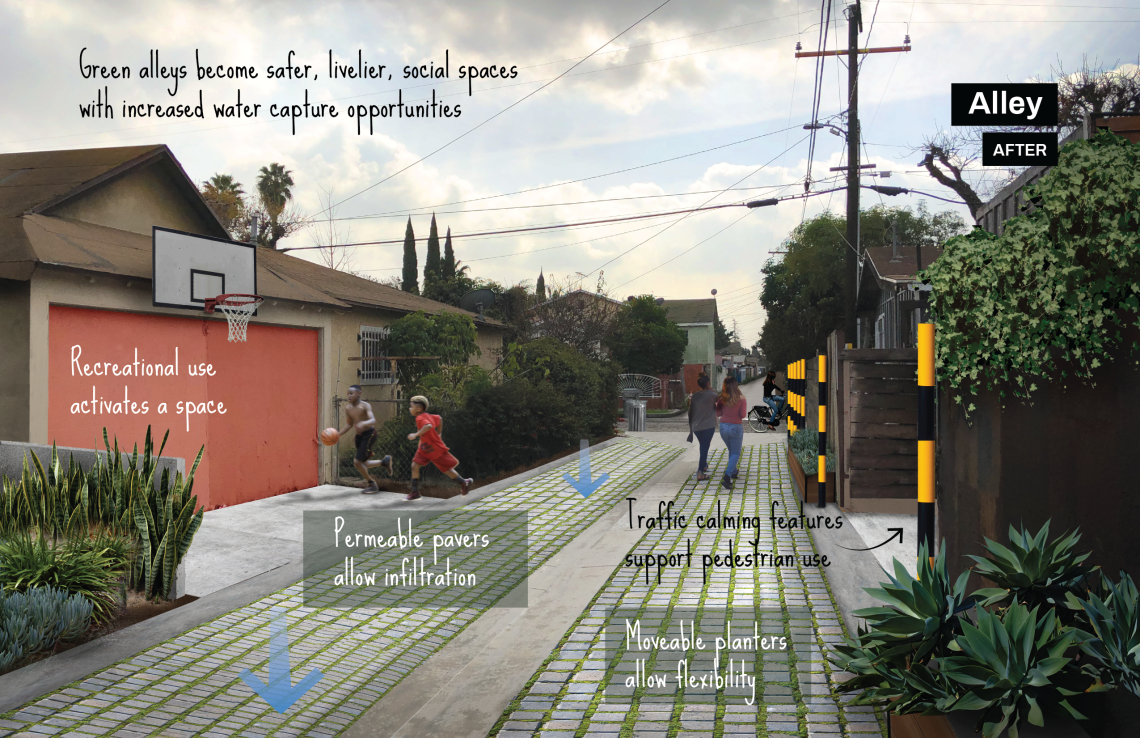
Alleys Add Up
↓Alleys in Los Angeles make up 900 linear miles, and their cumulative area is twice the size of New York’s Central Park. [1]
Green Alleys Can Clean Our Stormwater
↓Green Alleys can capture thousands of gallons of stormwater annually by absorbing runoff instead of flushing it to stormdrains.
Green Alleys Save Money
↓The City of Chicago found that construction costs for Green Alleys have saved money overall, compared with the cost of sewer system upgrades and maintenance.
Green Alleys Can Be Safe Routes
↓Green alleys often run parallel to the larger street network, making them ideal low-speed, low-volume links for cyclists and pedestrians.
greenscape title onthemap

The Alleys greenscape includes all alleyways between streets, but not shared driveways and private roads. The Gateway Cities' underutilized network of residential alleys can become an attractive and functional neighborhood amenity. Alleys provide opportunities to slow down vehicular traffic and create safe, calm places to walk to schools, parks, and shopping. Greening up alleys with permeable surfaces for water capture, shade, and climate appropriate landscaping, improves the safety of alleys as places to walk and play.
Scroll around and zoom into the map to see Alleys throughout the Gateway Cities region. You can also use the layers panel (top left) to toggle on and off all greenscape types. Where are the opportunities in your neighborhood?
greenscape title examples

This alley in South Los Angeles was tranformed as part of the Avalon Green Alley Network Demonstration Project, a collaboration between the City of Los Angeles and the Trust for Public Land. It is the first part of a proposed plan that will retrofit a series of alleys spanning six blocks in South Los Angeles. The project included the installation of underground infiltration trenches covered by permeable pavers and underground pipe carrying excess flow to the end of the alley to be treated and infiltrated into the soil, as well as plantings and aesthetic improvements.
“With this project, we transformed a deteriorated, hazardous alley in a high-density residential neighborhood into a more livable, greener space that captures, cleans and infiltrates storm water runoff while also providing a safer route for pedestrians. ... Strong, continuous support from the community was one of the keys to the project’s success... " — Los Angeles Sanitation
The Elmer Avenue Paseo project in Sun Valley converted a paved alley into a pocket park. It was designed to reduce, capture, treat and infiltrate storm runoff from forty acres using an infiltration gallery under the street, bioswales along the public right-of-way, permeable pedestrian surfaces, rain gardens and native landscaping. A collaboration between the Council for Watershed Health and the City of Los Angeles, the project was Phase II of the Elmer Avenue Neighborhood Retrofit Project, constructed in 2010.
_______
Have a successful example you'd like featured in this vision plan? Fill out this form and let us know!
greenscape title resources

The Green Alley programs in South LA, Chicago, Baltimore, and a growing list of US cities are retrofitting alleys to knit neighborhoods together.
Trust for Public Land Green Alley Program: Los Angeles — Video
South Los Angeles Green Alley Master Plan (AMP)
Baltimore Graffiti Alley/ Art Park
City of Chicago's Green Alley Handbook
Made with ❤️ by TreeStack.io
